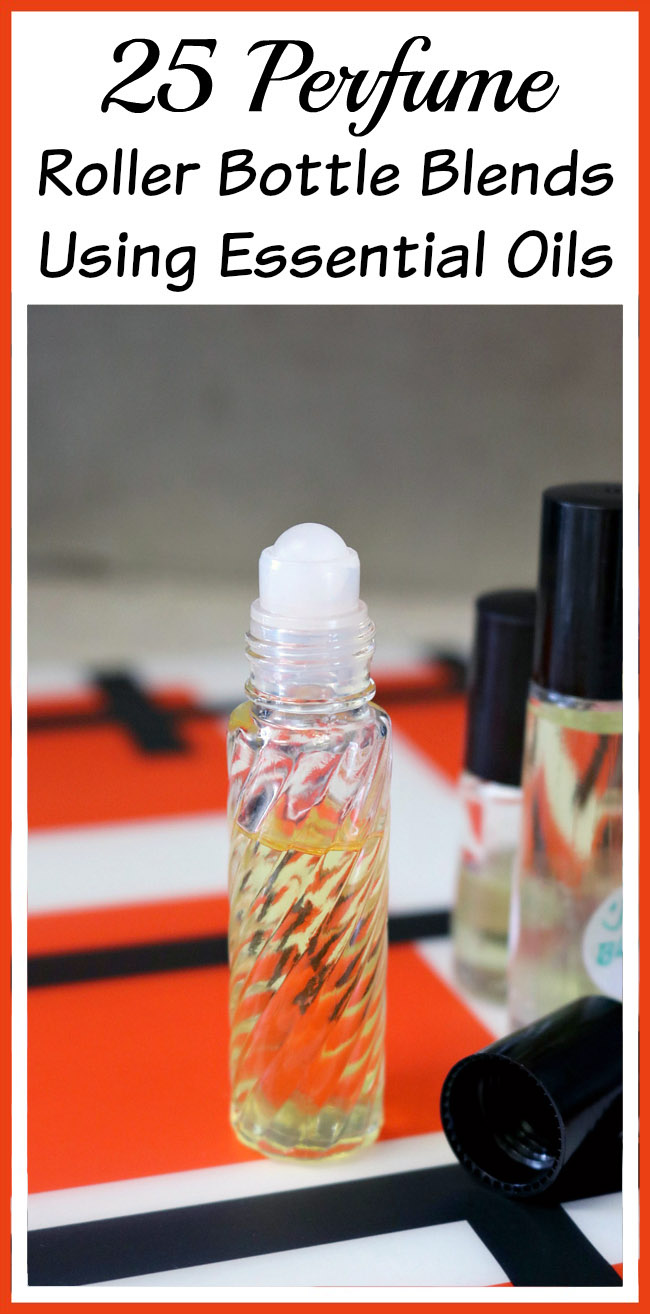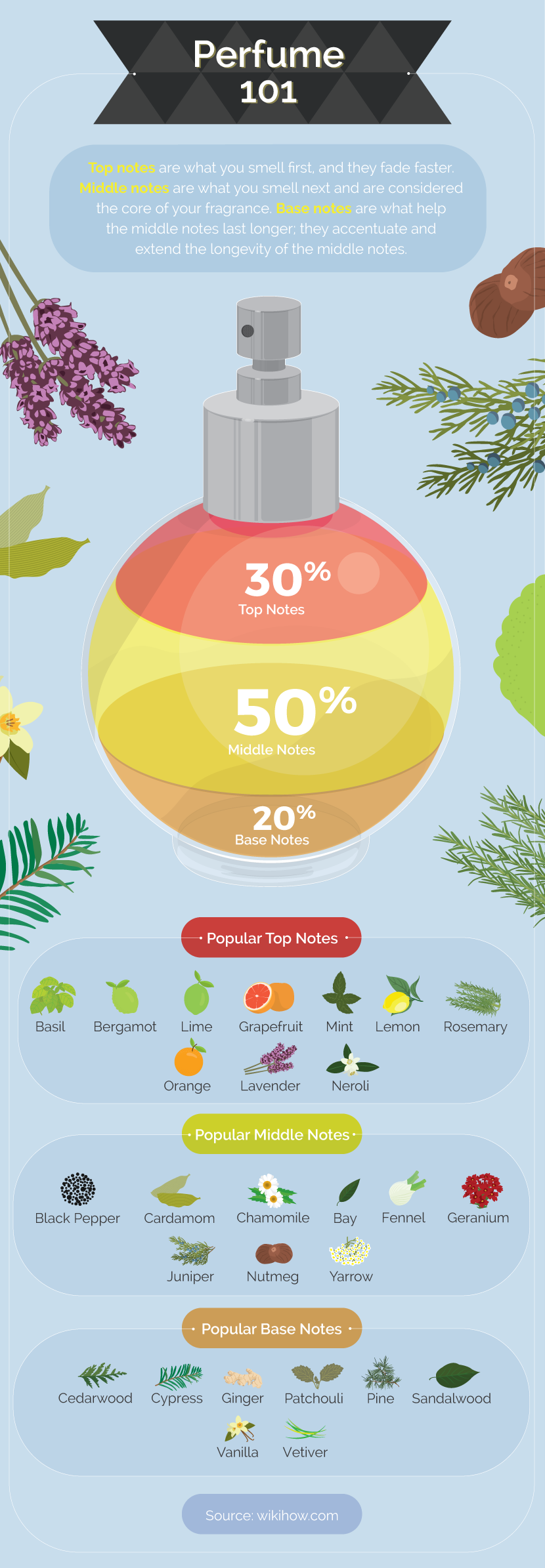Essential Oil Perfume Recipes Pdf
Keep your perfume out of the heat – Direct sunlight and heat can cause top notes in your DIY essential oil fragrance to break down quickly, even when it’s in the bottle. Store your perfume in a dark cupboard – and if it’s a particularly hot day, pop it in the refrigerator for a while.
Making and mixing your own creams, lotions and perfumes can be fun, and not only is it individualized but could also save you some money.
on this page you will find perfume recipes for
- The Aromatherapy and Essential Oil Centre was created to provide most of the oils available today at in order to assist our clients in finding common, as well as rare oils at costs much lower then retail shops. We have highlighted many of these oils on our website. It is important to note that oils used in perfumery, fragrance oils.
- Essential Oil Perfume Recipes And How To Blend Scents Here are a few homemade perfume recipes (based on a 2 oz. Bottle) that I have experimented with and enjoy, this will give you a good place to start however be sure to try and make a customized scent for yourself!
General information
Essential Oil Perfume Recipes Pdf Chart
To have a look at our page on creams and lotions, please click here and for recipes on hair care products, please click here.
Although we are a site selling essential oils, it must be kept in mind that the use of synthetic material would be acceptable in certain cases, since some pure floral absolutes, like rose and jasmine cost thousands of dollars per ounce. You can also make up mock fragrances - carnation to be made with equal amounts of black pepper and ylang-ylang with a tad of geranium.
The ideas below are a simple guide for you to get started, but it must be kept in mind that it is easier to add more essential oils to a blend to make the fragrance stronger, than it is to dilute the blend in order to tone the fragrance down.
For this reason it is better to rather add too little of an oil, and to top up later if you are looking for a stronger fragrance.

One cardinal rule you should always follow, is to write down the recipe, as you are mixing it, as it often happens that a person would prepare a wonderful fragrance, only to find that they cannot remember the quantities or the oils used in the mixture.
When mixing your fragrance you should use glass containers, as some plastic containers and instruments do tend to retain fragrance particles. For mixing the blend never use a metal object, but rather use a glass rod.
After you have used your mixing equipment, wash very well with a strong soapy solution, dry, wipe down with alcohol to remove all fragrance traces, wash again, rinse in clean water and dry for next use.
For storing your mixed fragrances buy blue or amber glass bottles, and if they have cork stoppers you would need to seal the cork stopper with paraffin wax to prevent oxidation, and if they are equipped with screw tops make sure that the tops have liners.
Essential oils are either added to alcohol or an oil base when making perfumes at home. The alcohol to use is ethanol, but for the sake of ease vodka can be used. It is best to buy a high quality 100% proof vodka since it has virtually no smell.
The oil base that can be used is jojoba oil - which is really a liquid wax. Jojoba has excellent keeping properties and does not have a very heavy odor of its own.
The percentage of essential oil used in perfumes is high, and to prevent any allergic reaction, remember to do a skin patch test if you have never used a particular oil, and also look at our page on essential oil safety by clicking here.
When blending your perfume or eau de toilette or cologne start with the base (alcohol/vodka or oil base depending on what you are making) and add the oils drop by drop.
Best Essential Oil Perfume Recipes
The classification of perfume, eau de toilette and eau de cologne is based on the strength of the fragrance it contains and the percentages of essences used.
For a perfume you will use around 15% essential oil, whilst for a lighter eau de toilette you will use about 4 - 8% essential oil and a yet lighter eau de cologne 1 - 5%.
If you want to work out your percentages, you can work on the premise that 1 ml is 20 drops. To work out your percentages convert the total of the oil used as well as the base - be that the alcohol/vodka or jojoba oil - to drops.
If your total drops are, let's say 58 drops, and your base 240 ml (240 x 20 = 4,800 drops) divide the amount of drops by the amount of drops in the base. Using the above example you will get a result of 0.012 = 1.2% concentrate of oil in the mixture.

Some of the recipes state that you should mix the blend, bottle, cap and leave for x amount of days. This is to give the fragrance time to settle and to achieve a more rounded fragrance.
- 16 drops bergamot
- 15 drops petitgrain
- 2 drops orange
- 15 drops lemon
- 5 drops lavender
- 5 drops neroli
- 10 ml orange flower water
- 230 ml alcohol/vodka
Place the alcohol/vodka base into your glass mixing container, add the oils in the order listed and mix well. Bottle, cap and leave the mixture for 4 days and then add the orange flower water and re-cap. Leave the mixture for at least two weeks, giving the bottle a gentle shake every day.
- 4 drops sweet orange
- 10 drops lemon
- 6 drops tangerine
- 8 drops frankincense
- 5 drops neroli
- 1 drop myrrh
- 10 ml alcohol/vodka or
- 10 ml jojoba oil for a oil based perfume.
Place the base into your mixing container and add the ingredients in the order listed and mix. Bottle and use. You can reduce the base, but do note your concentration will then exceed 15%.
- 5 drops coriander
- 6 drops bergamot
- 4 drops neroli
- 1 drops jasmine blend
- 3 drops rose blend
- 10 ml jojoba oil
Place oil base in mixing container, add oils in the order listed and mix. Bottle, cap and leave one week before using.
- 10 drops lavender
- 20 drops coriander
- 22 drops sandalwood
- 23 drops cedarwood
- 5 drop frankincense
- 100 ml alcohol/vodka
Place the alcohol/vodka mixture into your mixing bowl, add the oils in the order given and mix well.
The above is our humble contribution to fragrance mixing and is really basic. Your personal taste will determine what you like, and it may be a good idea to look at our pages on floral notes and blending for more information when blending your own fragrance.
Further reading
Homemade Essential Oil Perfume Recipes
We would also highly recommend that you consult some good books on mixing your own fragrances, and we could recommend the following books available from Amazon:
Perfumes, Splashes & Colognes: Discovering and Crafting Your Personal Fragrances by Nancy M. Booth (#ad)
Personalized perfumes: More than 40 recipes for making fragrances with essential oils by Gail Duff (#ad)
Album of fragrances: With complete instructions for making your own perfumes, potpourri, sachet, herbal moth repellent and incense by Edith G Bailes (#ad).
Use of essential oils
|
| Allspice Aniseed Basil Bay Benzoin Bergamot Black pepper Cajuput Calamus Camomile Camphor Caraway Carrot seed Cassia Cedarwood Chamomile Cinnamon Citronella Clary sage Clove Coriander Cypress Dill Eucalyptus Fennel Frankincense Galbanum Geranium Ginger Grapefruit Helichrysum Hyssop Jasmine Juniper Labdanum Lavandin Lavender Lemon Lemongrass Lime Mandarin Marjoram Melissa Myrrh Myrtle Neroli Niaouli Nutmeg Orange Origanum Palma rosa Patchouli Peppermint Petitgrain Pimento Pine Rose Rose geranium Rosemary | Rosewood Sage Sandalwood Spearmint Spikenard Tagetes Tangerine Thyme Tea tree Vetiver Ylang-ylangAngelica Baobab oil Marula oil Birch Bitter almond Boldo Buchu Cardamom Cumin Elemi Lemon verbena Mugwort Mustard Pennyroyal Rose otto Rue Sassafras Tansy Tarragon Savin Thuja Tuberose Vanilla Wintergreen Wormseed Wormwood YarrowMuscle & Joint Relaxation Sensual Anti-cellulite Circulation Hair & Scalp Dry & Mature Skin Insomnia Baby Vein & Artery Uplifting and Grounding | Rosehip oil Neem oilAlmond oil Aloe vera oil Apricot kernel oil Avocado oil Calendula oil Evening primrose oil Grape seed oil Hazelnut oil Jojoba oil Olive oil Wheatgerm oilMacadamia oil Pumpkin seed oil Sesame oil Safflower oil Sunflower oil Walnut oil |
Recipes |
Safety with essential oils |
Related articles |


Manufacture of essential oils
|
Holistic and alternative medicine |
Treatment of ailments with essential oils
| |
| Abdominal pain Abscess Acne Addictions Anal fissures Athlete's foot Bad breath Bedsores Bleeding Bleeding gums Blepharitis Blisters Boils Breathing difficulty Bronchitis Bruises Burns Carbuncles Catarrh Chapped lips Chilblains Circulation Cold sores Colds Conjunctivitis Constipation Coughs Cuts Diarrhea Diverticulosis Dysmenorrhoea Ear infections Fainting | Fever Flu Frostbite Gingivitis Grazes Halitosis Hay fever Headaches Heart palpitations Heartburn Hiccups High blood pressure Influenza Insect bites Insomnia Jetlag Laryngitis Leg cramps Lumbago Mouth ulcers Nausea Neuralgia Nosebleed Pneumonia Shock Sinusitis Sore throat Splinter Sty Swollen ankles Toothache Varicose veins Wounds |